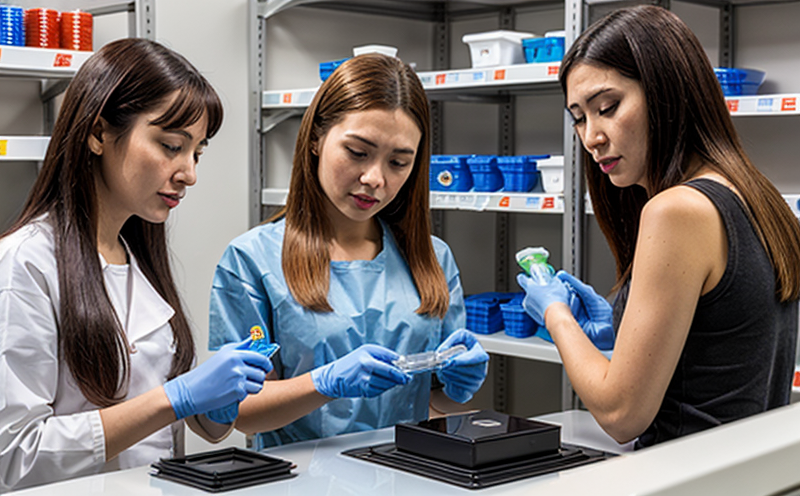DIN EN ISO 11345 Crosslink Density Testing of Consumer Plastics
The DIN EN ISO 11345 standard is widely recognized for its stringent procedures in assessing the crosslink density of thermosetting plastics. This test method, particularly relevant to consumer plastics like those used in household appliances and packaging materials, provides a critical measure of material quality which directly impacts performance and safety.
In this process, samples are subjected to specific thermal treatment followed by an extraction step that removes un-crosslinked polymer chains. The remaining crosslinked network is then quantified using calorimetric techniques or other analytical methods prescribed in the standard. This rigorous testing ensures compliance with industry regulations, enhances product reliability, and supports innovation within the sector.
Understanding the crosslink density helps manufacturers optimize formulations to balance flexibility and durability. For instance, higher crosslink densities can lead to improved mechanical properties but may reduce processability. Conversely, lower densities might enhance workability yet compromise on long-term stability. By adhering strictly to DIN EN ISO 11345 guidelines, labs ensure accurate determination of these parameters.
Compliance with this international standard is crucial for companies operating globally as it aligns their testing practices with those of leading industrial nations. This uniformity fosters better communication between suppliers and customers across borders. Moreover, compliance demonstrates a commitment to maintaining high standards throughout the supply chain, thereby building trust among stakeholders.
The methodology outlined in DIN EN ISO 11345 involves careful selection of appropriate specimens representative of intended use conditions. Specimen preparation must account for factors such as size, shape, and orientation relative to the crosslinked structure. Once prepared, samples undergo thermal treatment designed to fully activate all crosslinks present within the matrix.
Following activation, an extraction process removes excess monomers or oligomers not involved in forming the three-dimensional network. The resulting solid fraction represents only true crosslinked regions of interest. Various analytical techniques may then be employed depending on available equipment and desired precision levels.
Industry Applications
| Industry Sector | Application Example |
|---|---|
| Housing and Construction | Testing crosslinks in adhesives used for bonding composite materials. |
| Consumer Electronics | Evaluating the durability of plastic enclosures subjected to high temperatures. |
| Packaging and Printing | Determining the integrity of sealants applied during food packaging processes. |
| Automotive Manufacturing | Assessing the resistance to impact deformation in structural components made from reinforced plastics. |
Quality and Reliability Assurance
The implementation of DIN EN ISO 11345 crosslink density testing plays a pivotal role in ensuring product quality and reliability. It allows manufacturers to monitor changes over time due to environmental exposure or aging effects, identifying potential issues early enough for corrective actions.
By incorporating this test into their quality control protocols, companies can enhance customer satisfaction by delivering consistent performance across all batches produced under identical conditions. Additionally, it supports continuous improvement efforts aimed at reducing waste and improving overall efficiency within the production process.
For research and development teams working on new formulations or design iterations, crosslink density measurements provide valuable insights into material behavior under various stress scenarios. This information helps guide further refinement of existing products or development of novel solutions tailored specifically to meet evolving market demands.
Environmental and Sustainability Contributions
The pursuit of sustainable practices has become increasingly important across industries, including polymer & plastics manufacturing. By accurately measuring crosslink density through DIN EN ISO 11345 testing, organizations contribute positively towards environmental goals by producing more efficient materials that require less energy during production.
Reduced reliance on raw petroleum-based feedstocks translates into lower greenhouse gas emissions throughout the lifecycle of a product. Furthermore, improved material performance leads to longer-lasting products with reduced need for frequent replacements, thus minimizing waste generation and promoting circular economy principles.
This form of testing also enables better decision-making regarding end-of-life disposal options, whether recycling or incineration processes are considered more appropriate based on the characteristics revealed by crosslink density analysis. Overall, adherence to DIN EN ISO 11345 standards supports a holistic approach towards creating environmentally friendly products and practices.





